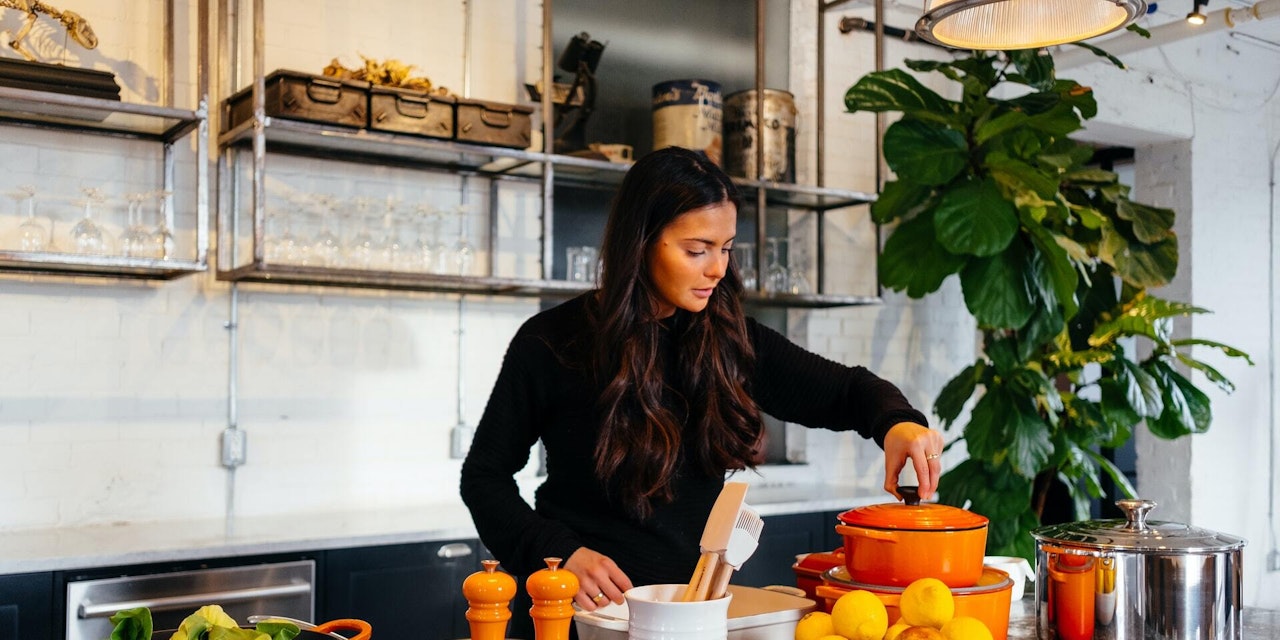Bioavailability: Hacking Your Body for Better Health
Learn about bioavailability, which foods are a match made in nutrient heaven and how they help out your health.
- Published: 8/15/2022
- 4 min. read

- Published: 8/15/2022
- 4 min. read
Did you know that your body dictates which nutrients you can absorb - and that it changes over time? Bioavailability refers to the amount of a nutrient that gets absorbed and used by our bodies. This is influenced by our nutritional status, life's-stage, and which foods or nutrients we combine. Learn which foods are a match made in nutrient heaven and how they help out your health.
What is bioavailability?
Bioavailability refers to the amount of a nutrient in a food or supplement absorbed and used by our bodies (1). This is influenced by many factors such as our age, how healthy we are, and what type of foods we eat. Eating certain foods together can influence how well our body uses them. It can be more helpful to eat whole foods with various nutrients, rather than a supplement.
Supplementing bioavailability
You can’t step into a grocery or drug store without being overwhelmed with the aisles stocked full of supplements. Isolated nutrients (think supplements) have gained a lot of attention as being the “cure” to deficiencies or to preventing disease. But some studies suggest that when a nutrient is isolated, such as vitamin C, it may not be as helpful as when it's found in a portion of food (2).
It also depends on the quality of the supplement and the form of the vitamin or mineral. Different types are not absorbed well by our bodies. They can contain harmful ingredients. This is why it's always good to check with your doctor before trying one out. When a nutrient is found in whole foods, other nutrients can help up its absorption!
Perfect pairs
Iron and vitamin C
Iron is important in order to help our body bring oxygen to all our cells. It’s found in both plant and animal foods however the type that’s found in animal foods, called heme iron, is typically absorbed a lot better than the plant type (3). In order to up absorption and prevent deficiencies such as anemia, pair plant-based iron with vitamin C.
- Iron: red meat, beans, nuts, broccoli, spinach, dried fruit.
- Vitamin C: oranges, lemon, bell peppers, strawberries, broccoli.
Try a spinach salad with orange slices!
Vitamin D and calcium
Calcium is a mineral that helps keep our bones strong, muscles contracting, and heart beating (4). Vitamin D is a vitamin that helps reduce inflammation and boost brain health. It also plays a vital role in protecting our bones. Without enough vitamin D, we can't absorb calcium (5).
- Vitamin D: salmon, fortified milk, mushrooms, sunlight.
- Calcium: green leafy vegetables, dairy foods, fish with bones (sardines), fortified dairy alternatives (soy milk, almond milk).
Cook up a quick salmon stir fry with bok choy.
Vitamin A and lycopene with healthy fats
Vitamin A is essential for good vision and immunity. It’s a fat-soluble vitamin, meaning that we need to eat dietary fat in order for our bodies to absorb it. Lycopene is related to vitamin A. It’s an antioxidant that has been suggested to decrease the risk of certain types of cancer (6). The bioavailability of lycopene skyrockets with healthy fats. It also increases when cooked - think classic tomato sauce!
- Vitamin A: cheese, liver, salmon, egg, squash, bell peppers, tomato.
- Lycopene: tomatoes, watermelon, guava, grapefruit, bell peppers.
- Healthy fats: plant-based oil, nuts, seeds, avocado, olives.
Enjoy some guacamole with chopped tomatoes. Or this delicious Lifesum recipe...
Synergistic recipe: bean pasta with red pepper sauce
This Lifesum recipe spin on the classic pasta with tomato sauce is a match made in synergistic nutrient heaven. The vitamin C from the peppers pairs with the iron from the beans in the pasta. Lycopene from bell peppers is absorbed more readily with olive oil and cooking. If you want to go all the way and include a calcium and vitamin D combo, simply throw in some sliced mushrooms for vitamin D!
Ingredients:
- 2 red peppers
- 1 can boiled white beans 15oz / 380g
- 3 tbsp olive oil
- 1 garlic clove
- 3 tbsp nutritional yeast
- 1 tsp salt
- 1/4 tsp black pepper
- 7oz / 200g bean pasta
- 1/4 cup / 30g chopped parsley
Instructions:
- Set the oven to 475F / 250C
- Cut the stems off of the red peppers with a pairing knife and cut them in half. Scoop out all the seeds and membranes.
- Place the peppers cut-side down on a rimmed baking sheet that has been lined with parchment paper. Grill them in the oven until they char completely. Place them in a plastic bag and allow them to cool. Pull off the skin.
- Pour off the water and rinse the beans. Blend all of the ingredients together in a food processor into a smooth paste
- Add salt and black pepper
- Cook the pasta as instructed on the package. Serve the pasta with sauce and parsley.
All of the content and media on Lifesum is created and published for information purposes only. It is not intended to be used as a substitute for medical advice or treatment. Users should always consult with a doctor or other health care professional for medical advice.
6 references (hide)
All of the content and media on Lifesum is created and published for information purposes only. It is not intended to be used as a substitute for medical advice or treatment. Users should always consult with a doctor or other health care professional for medical advice. If you have or think you are at risk of developing an eating disorder, do not use the Lifesum app and seek immediate medical help.